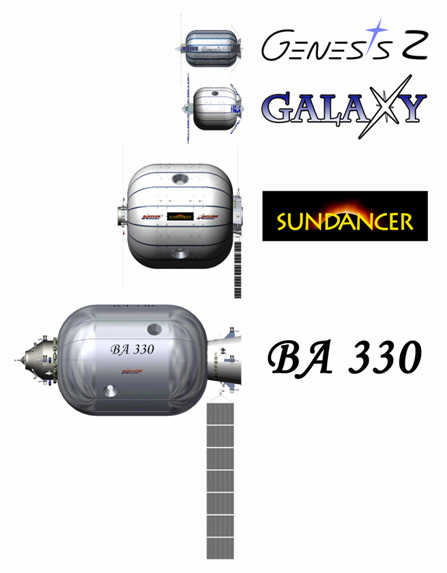Bigelow Aerospace Fast-Tracks Manned Spacecraft

Following thesuccessful launch and deployment of two inflatable space modules, on Monday the owner andfounder of Bigelow Aerospace announced plans to move ahead with thelaunch of its first human habitable spacecraft, the Sundancer.
Thedecision to fast-track Sundancer was made in part to rising launch costs aswell as the ability to test some systems on the ground, company CEO RobertBigelow said in a press statement.
"As anyoneassociated with the aerospace industry is aware, global launch costs have beenrising rapidly over the course of the past few years," Bigelow is quoted assaying. "These price hikes have been most acute in Russia due to a number offactors including inflation, previous artificially low launch costs and thefalling value of the U.S. dollar."
Theannouncement follows the success earlier this year of the launch of Genesis 2,the second inflatable module launched by Bigelow Aerospace as a prototype forfuture commercial space stations in Earth orbit. The U.S. firm launched itsfirst spacecraft, Genesis 1, in July 2006, which remains operational today.
BigelowAerospace had planned to take a stepping-stone approach to the development ofits space modules. Next in line after Genesis 2 was to be the larger Galaxymodule scheduled to launch in the latter part of 2008.
But the "dramaticrise in launch costs has forced us to rethink our strategy with Galaxy,"Bigelow said. "Due to the fact that a high percentage of the systems Galaxy wasmeant to test can be effectively validated on a terrestrial basis, thetechnical value of launching the spacecraft – particularly after the successfullaunch of both Genesis 1 and 2 – is somewhat marginal."
The Sundancermodule will provide 180 cubic meters of habitable space and will come fully equippedwith life-support systems, attitude control and on-orbit maneuverability, as wellas reboost and deorbit capability. This larger module – sporting a trio ofwindows – could support a three-person crew and be on orbit in the second half of2010, Bigelow told Space News in March of this year.
Breaking space news, the latest updates on rocket launches, skywatching events and more!
"We stillintend to construct and test the Galaxy spacecraft and/or various parts of itin order to gain familiarity and experience with critical subsystems," Bigelowsaid in the release. "However, by eliminating the launch of Galaxy, we believethat [Bigelow Aerospace] can move more expeditiously to our next step byfocusing exclusively on the challenging and exciting task presented by theSundancer program."
"With thisdecision made, the future of entrepreneurial, private sector-driven spacehabitats and complexes could be arriving much earlier than any of us hadpreviously anticipated," Bigelow said.
- Bigelow's Second Orbital Module Launches Into Space
- VIDEO: Robert Bigelow: Lessons, Visions and Realities of Commercial Space
- VIDEO: More on Bigelow Aerospace's Inflatable Modules and Space News TV.
- Bigelow Aerospace Aims for an International Market

Space.com is the premier source of space exploration, innovation and astronomy news, chronicling (and celebrating) humanity's ongoing expansion across the final frontier. Originally founded in 1999, Space.com is, and always has been, the passion of writers and editors who are space fans and also trained journalists. Our current news team consists of Editor-in-Chief Tariq Malik; Editor Hanneke Weitering, Senior Space Writer Mike Wall; Senior Writer Meghan Bartels; Senior Writer Chelsea Gohd, Senior Writer Tereza Pultarova and Staff Writer Alexander Cox, focusing on e-commerce. Senior Producer Steve Spaleta oversees our space videos, with Diana Whitcroft as our Social Media Editor.
